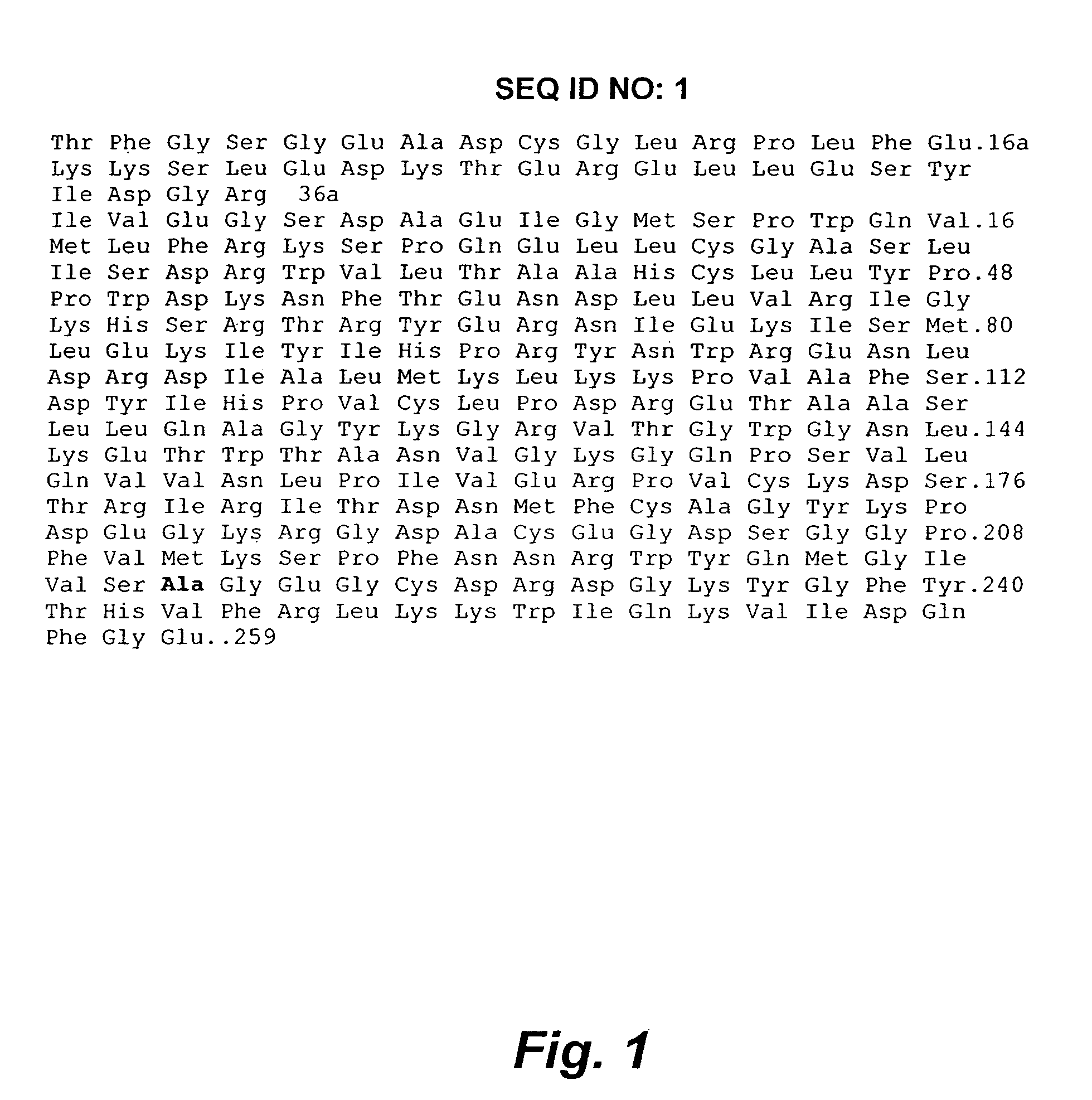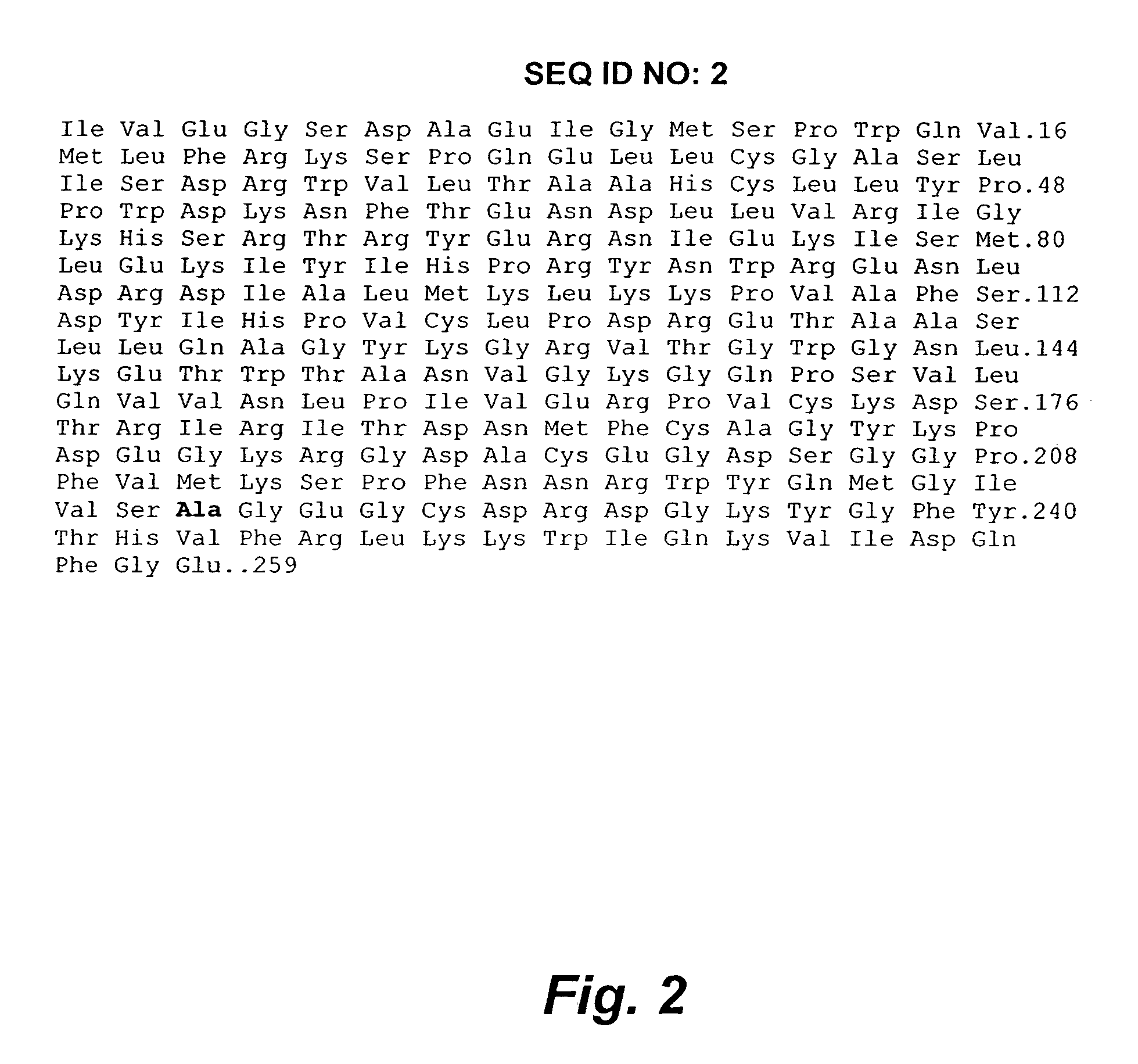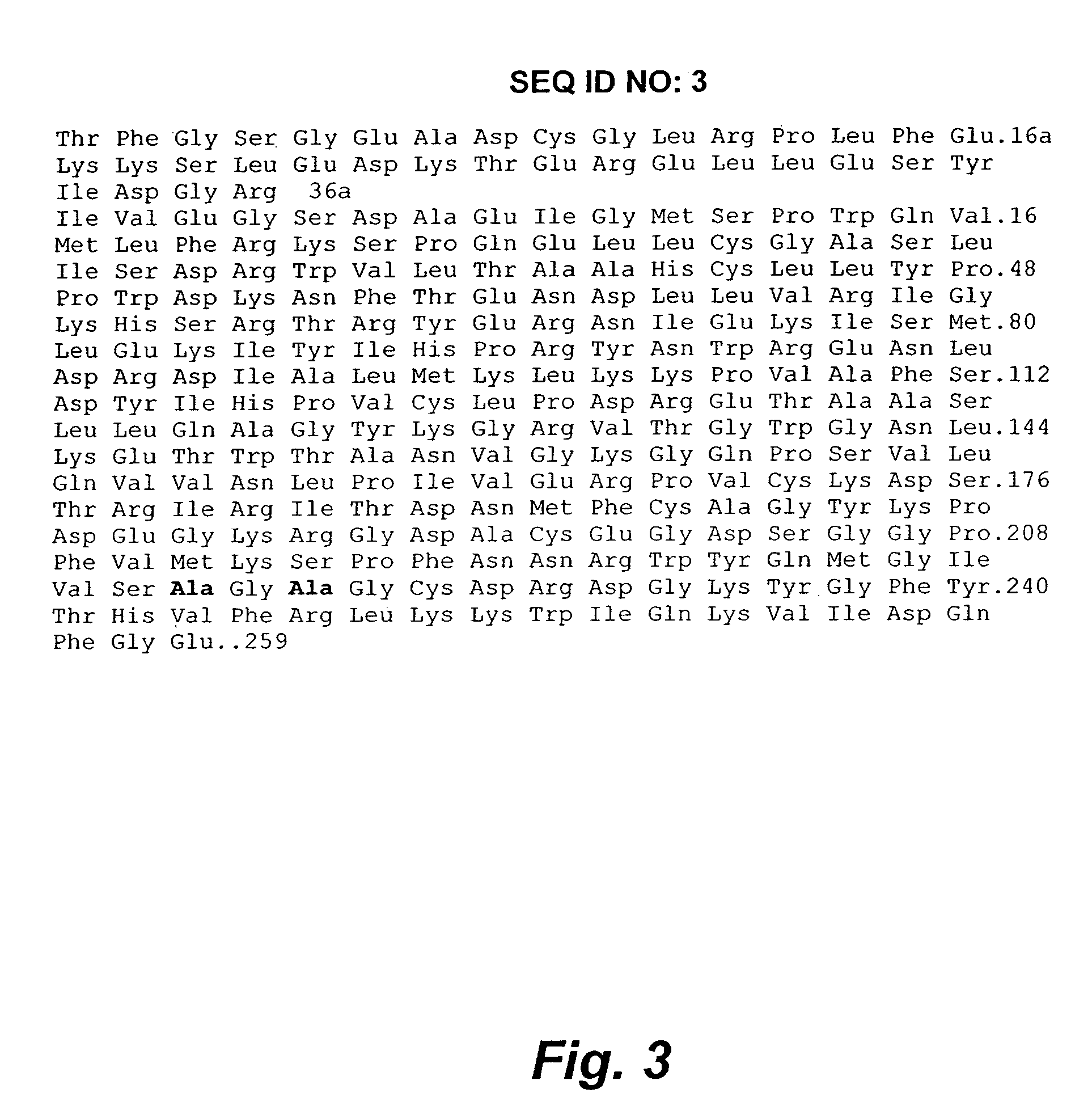Antithrombotic thrombin variants
a technology of antithrombotic thrombins and variants, which is applied in the field of antithrombotic variant prothrombins and thrombins, can solve the problems of increased medical difficulty, high cost of injectable dosage forms of natural or recombinant apc for therapeutic use, and adverse side effects of low-grade fibrin formation and platelet activation that accompany the infusion of wt, so as to reduce fibrinogen cleavage activity, reduce the capacity of thrombus
- Summary
- Abstract
- Description
- Claims
- Application Information
AI Technical Summary
Benefits of technology
Problems solved by technology
Method used
Image
Examples
example 1
Mutagenesis of Thrombin to Variants Having the W215A and W215A / E217A Substitution
[0179]Site-directed mutagenesis of human α-thrombin was carried out in a HPC4-pNUT expression vector as described in Arosio et al. Biochemistry 39: 8095-8101 (2000) and incorporated herein by reference in its entirety, using overlap extension PCR with two mutant oligonucleotides: upstream: 5-GGGCATCGTCTCAXXXGGTGAAGGCTG TG-3(SEQ ID NO: 7); downstream: 5-CACAGCCTTCACCXXXTGAGACGATGCCC-3 (SEQ ID NO: 8) and two flanking oligonucleotide primers, BgIII (upstream): 5-GAAGATCTACATCCACCCCAGG-3 (SEQ ID NO: 9 and; EcoRI (downstream): 5-TGACCATGATTACGAATTC-3 (SEQ ID NO: 10). For the generation of the double mutant variant W215A / E217A (WE) thrombin, the forward primer 5′-GGGCATCGTCTCAGCGGGTGCAGGCTGTGACCGGG-3′ (SEQ ID NO: 11) and the reverse primer 5′-CCCGGTCACAGCCTGCACCCGCTGAGACGATGCCC-3′ (SEQ ID NO: 12) were used. Expression of the variant thrombins was carried out in baby hamster kidney cells as described in Guinto...
example 2
Preparation and Safety of Antithrombotic Variant Thrombins
[0180]WT, W215A and WE variant thrombins were expressed, purified, and characterized in detail as described by Cantwell & Di Cera. J. Biol. Chem. 275: 39827-39830 (2000), incorporated herein by reference in its entirety. WE was stored in aliquots frozen until used in the thrombosis or coagulation experiments. To confirm that injection of variant thrombin WE would be at least as safe as injection of WT in baboons, the procoagulant activities of the two thrombins were compared in baboon plasma prepared by pooling citrated plasma samples from five animals. Citrated plasma was diluted 1:1 with isotonic saline, and the thrombin analogs were diluted with 0.1 M NaCl, 0.01 M CaCl2, 0.02 M Tris, pH 7.3 prior to testing. 100 μl of thrombin analog was then added to 200 μl of baboon plasma and the clotting time was determined using a fibrometer. WE was at least 500-fold less procoagulant in baboon plasma than WT.
example 3
Assays for the Properties of Variant Thrombin W215A
[0181]All assays were carried out under experimental conditions of 5 mM Tris, 0.1% PEG, 145 mM NaCl, pH 7.4 at 37° C., unless otherwise specified. The chromogenic substrates FPR and LDPR were synthesized by solid phase, purified by HPLC and analyzed by mass spectrometry. Progress curves of the release of p-NA following the hydrolysis of chromogenic substrate were measured at 405 nm as a function of substrate concentration and analyzed to extract the values of kcat / Km and kcat, after proper correction for product inhibition. The activation of protein C in the presence of 100 nM rabbit thrombomodulin and 5 mM CaCl2, the release of fibrinopeptide A from fibrinogen and fibrinopeptide B from fibrin, and the inhibition of thrombin by antithrombin III in the presence of 0.5 USP units / mL of heparin were carried out as described by Dang et al. in Nat. Biotechnol. 15: 146-149 (1997) and incorporated herein by reference in its entirety.
[0182]T...
PUM
| Property | Measurement | Unit |
|---|---|---|
| Fraction | aaaaa | aaaaa |
| Time | aaaaa | aaaaa |
| Time | aaaaa | aaaaa |
Abstract
Description
Claims
Application Information
 Login to View More
Login to View More - R&D
- Intellectual Property
- Life Sciences
- Materials
- Tech Scout
- Unparalleled Data Quality
- Higher Quality Content
- 60% Fewer Hallucinations
Browse by: Latest US Patents, China's latest patents, Technical Efficacy Thesaurus, Application Domain, Technology Topic, Popular Technical Reports.
© 2025 PatSnap. All rights reserved.Legal|Privacy policy|Modern Slavery Act Transparency Statement|Sitemap|About US| Contact US: help@patsnap.com



